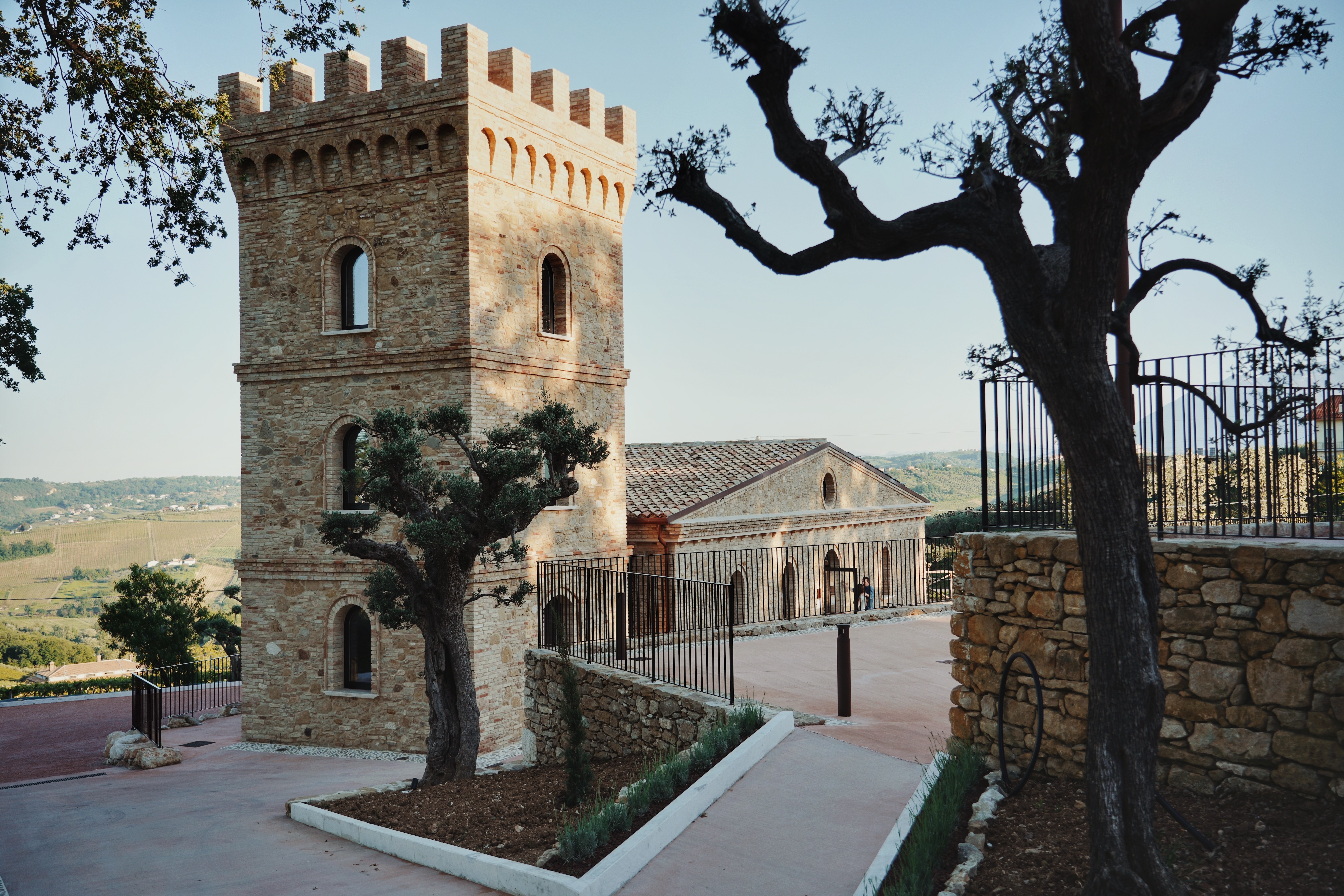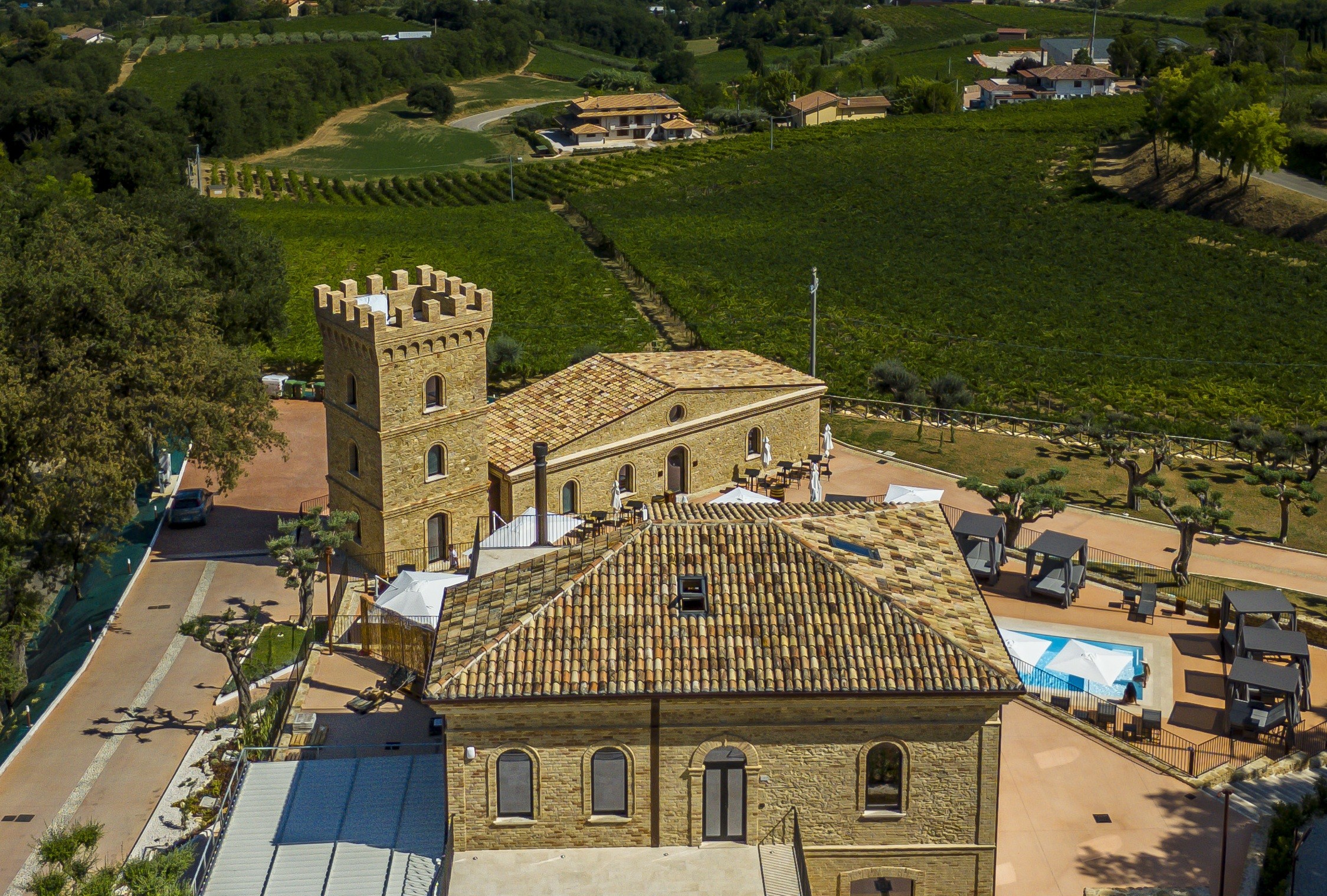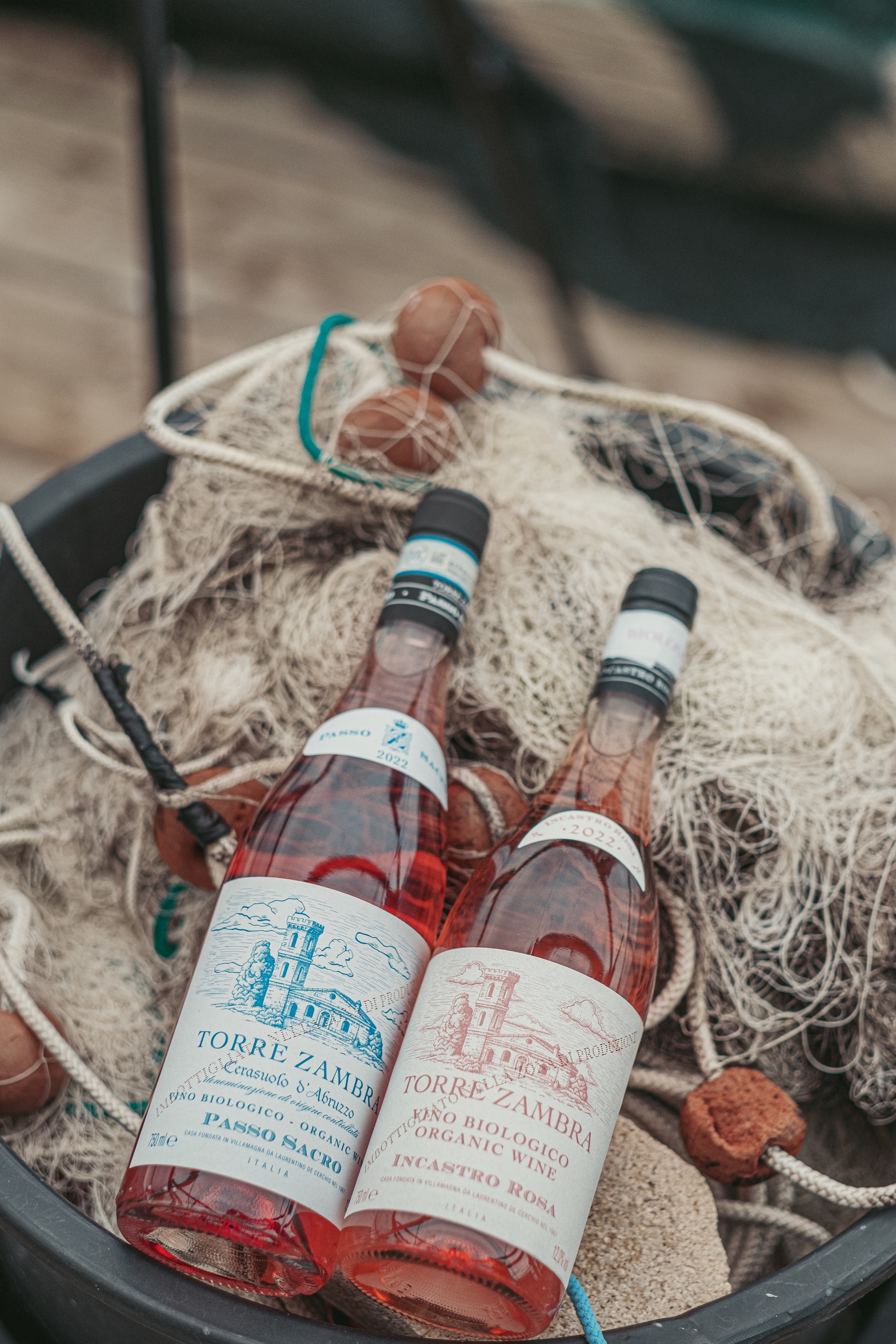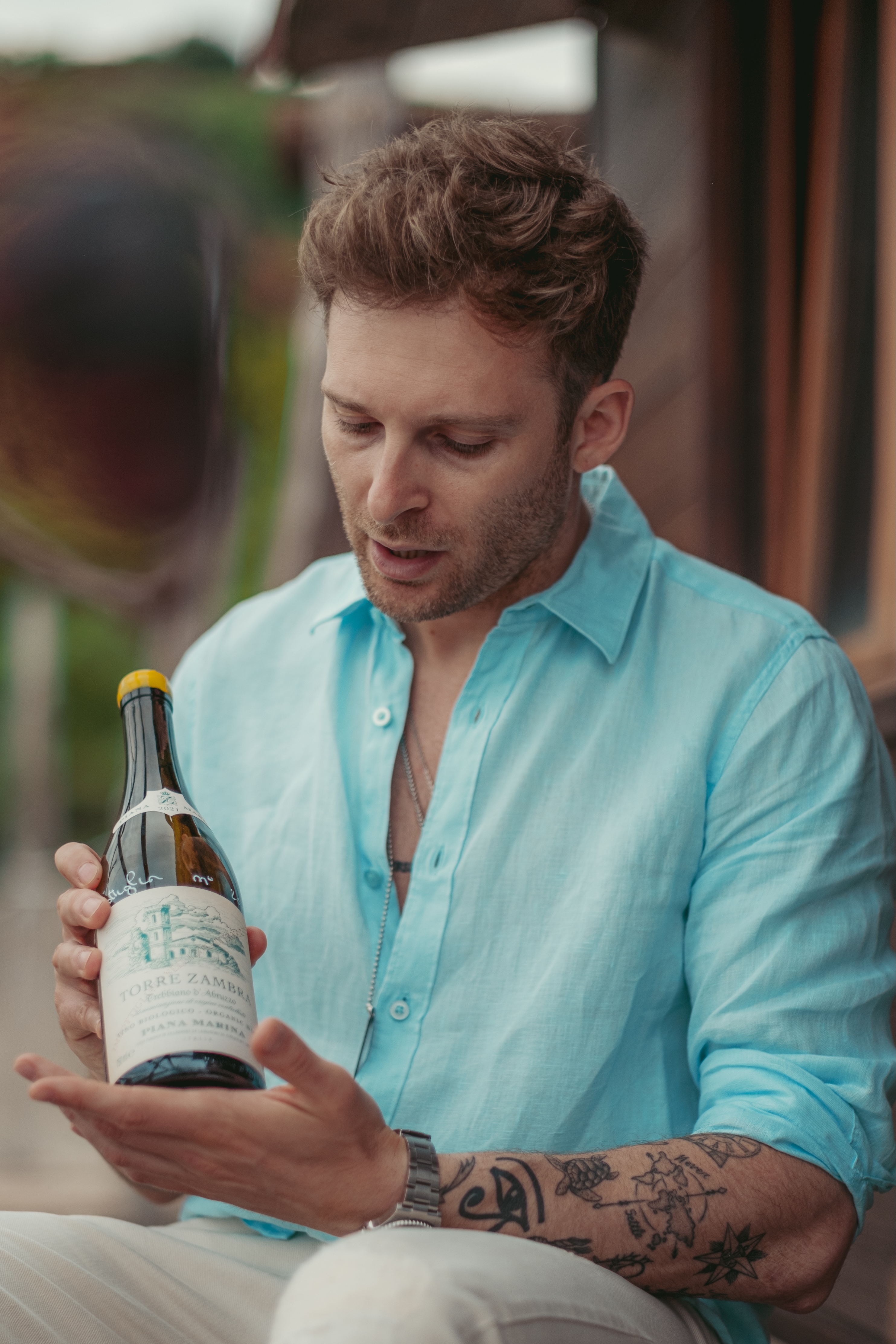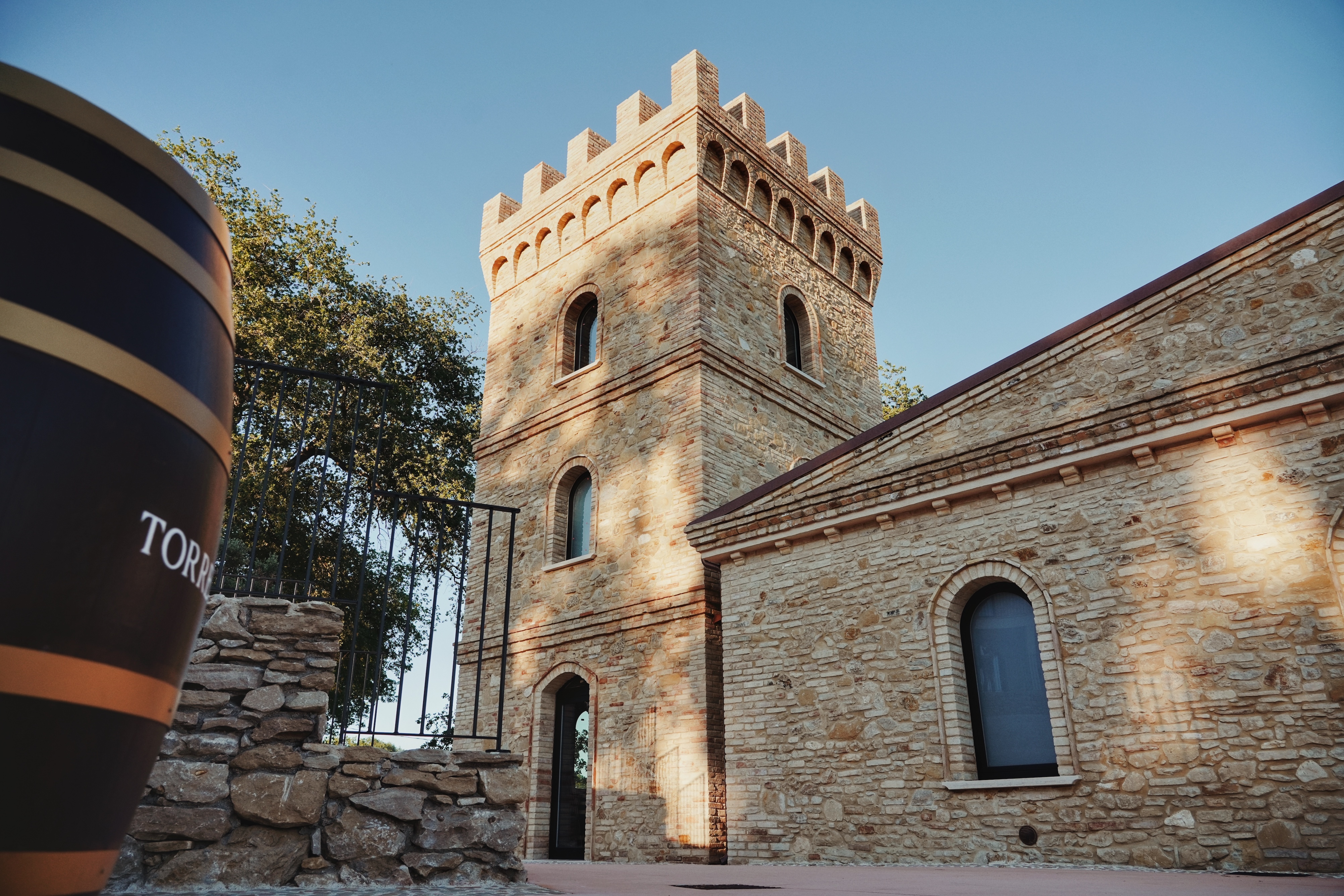La Peninsula
La Peninsula
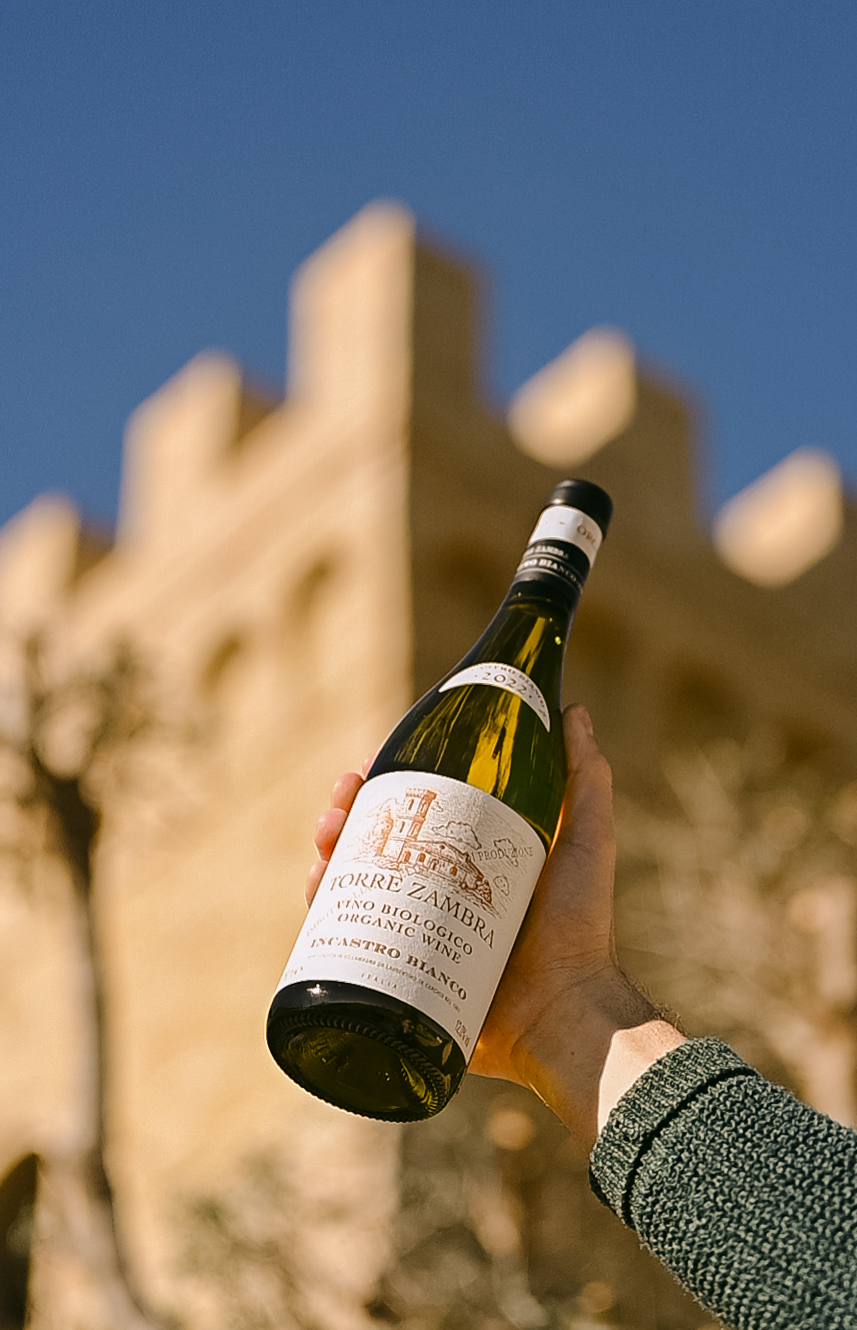
In 1910, Vincenzo De Cerchio set out by dogcart to Naples, determined to secure twenty hectares of hillside vineyards surrounding a medieval watchtower known as Torre Zambra. Purchased from the Zambra family, this land in Villamagna became the cradle of the family’s winemaking tradition.
De Cerchio planted Montepulciano and Trebbiano vines, tending them for nearly thirty years. Then, World War II pounded through Italy. Abruzzo was not spared; De Cerchio’s carefully-cultivated vineyards were destroyed. The family lost everything. This dark chapter marked the end of what had been an era of growth…but also signaled a coming period of renewal.
In 1947, De Cerchio’s son, Laurentino, returned to Abruzzo. Just freed from a prisoner-of-war camp, he shirked off the shadow of war, plunged into the land, and began to replant. By 1961, he had founded the Torre Zambra winery, one of the most historic cellars in Abruzzo. In the decades that followed, Laurentino’s son Riccardo modernized the estate, raising its profile while preserving its roots in Villamagna’s unique terroir.
Villamagna is a charming medieval village in the province of Chieti, just 10 km from the white beaches of the Adriatic Sea and 10 km from the foothills of the Majella mountain range. Its name, Latin for “big farm,” reflects its extensive agricultural heritage, recorded as far back as 1059 in a papal bull by Pope Niccolò II.
The village’s centuries-old vocation for vine growing is now recognized with the Villamagna DOC designation, making it one of the smallest and most prestigious appellations in Italy, if not the world.
The Torre Zambra vineyards are set on south-east facing slopes at 120–200 meters (400–650 feet) above sea level. Clay-limestone soils, rich in humus and nutrients, provide excellent drainage while concentrating flavor and aroma in the grapes.
The proximity of the Adriatic Sea and the Majella mountains creates dramatic day-to-night and seasonal temperature shifts, producing fragrant white wines and complex, cellar-worthy reds.
Awarded DOC status in 2011, Villamagna specializes in Montepulciano grapes. While Pecorina, Passerina, and Trebbiano are also featured among the Torre Zambra varietals, Montepulciano is a fan-favorite as its grapes grow across just 85 hectares under vine.
Compared to Montepulciano d’Abruzzo, Villamagna DOC wines offer broader structure, intricate depth, and aromatic complexity. Production standards are strict thanks to the Generazioni del Villamagna DOC association. The group sets stricter guidelines than the official DOC rules to elevate quality and preserve typicity. It sets guidelines for how much each DOC can yield, along with its minimum alcohol content, how long it can age in the barrel, and even what kind of barrel can be used (typically oak). Villamagna DOC Riserva, Villamagna DOC, and Montepulciano d’Abruzzo DOC are all produced under this strict umbrella of quality-first guidelines.
The Generazioni del Villamagna DOC adheres to quality, right down to the science behind each grape;. In the Villamagna DOC Riserva, for example, uses extended oak barrel aging that refines the tannins. Tannins, the polyphenols derived from grape skins, seeds, and stems, determine the heart of the wine. Flavor, structure, mouthfeel, and bitterness are defined by the tannins, which are defined by the group’s winemaking standards.
Quality is further enhanced by naturally low yields; Montepulciano, by its nature, produces lower quantities of grapes so that the flavor and aromatic experience are at peak quality.
Driven by environmental awareness, the De Cerchio family adopted organic viticulture across their estates. They work in harmony with natural planting cycles, using non-invasive techniques and careful manual vineyard management to protect Abruzzo’s biodiversity.
Sustainability extends into the cellar with spontaneous fermentation. Native vineyard yeasts spark natural fermentation, which cultivates wines imprinted with its own unique aromatic quality that preserves Villamagna’s microclimate and complex soils. By embracing the vineyard’s natural yeast populations, the Torre Zambra winery relies only on the purest form of its landscape’s yield.
Under the leadership of Federico De Cerchio, the fourth generation of De Cerchio’s helming the business, Torre Zambra has expanded its presence to over 30 export markets. While innovation and sustainability guide the winery’s future, its foundation remains rooted in the traditions of Villamagna DOC Montepulciano. Under this new era of De Cerchio leadership, Torre Zambra’s labels have extended up and down the Italian peninsula.
Pajaru, produced four hours away in Manduria, Puglia, is an ode to Laurentino De Cerchio’s limitless vision for the winery’s future. It is defined by limestone soils and ochre red earth, large yields of iron, aluminum hydroxides, and quartz and clay minerals. The defining grape? Nero di Troia, Puglia’s icon of Adriatic wines.
Peri Peri is Torre Zambra’s imprint beyond the mainland peninsula. Sicily, with its dry landscape and glistenings coasts off Calabria’s shores, grows the estate’s Nerello Mascalese, Frappato, Perricone, Inzolia and Zibibbo varieties. Cultivated by island breezes and red alluvial soils, Peri Peri embodies the wanderlust behind its name.
Dominio Imperfetto is from Abruzzo’s Trabocchi Coast, Idi di Marzo is Villamagna’s homebody wine, and Torre Zambra is the land’s namesake bottle.
“We always try to empower our local community,” said De Cerchio. “We believe that people that live nearby the winery have seen the winery grow up.”
All in all, Torre Zambra offers a variety that isn’t restricted by geography or regional borders; it reflects Italy’s diversity in spirits with an ode to historical beginnings.
“Making wine at different wineries in different regions is very complicated,” added De Cerchio. “But we knew that having a more complete portfolio of family estates would grow the way we are perceived as winemakers and benefit Torre Zambra itself.”
Today, Federico De Cercio leads the reconstruction of the original Torre Zambra tower, using salvaged bricks to restore its historical character. Plans include guest accommodations, a wine bar, a restaurant, a pool, and event spaces—turning the estate into an exclusive haven for lovers of Abruzzo wine tourism.
From its medieval village roots to its modern organic vineyards, Torre Zambra embodies the enduring spirit of Abruzzo winemaking. Its Villamagna DOC Montepulciano wines unite elegance, history, and authentic terroir, offering a taste of De Cerchio family legacy in every glass.

